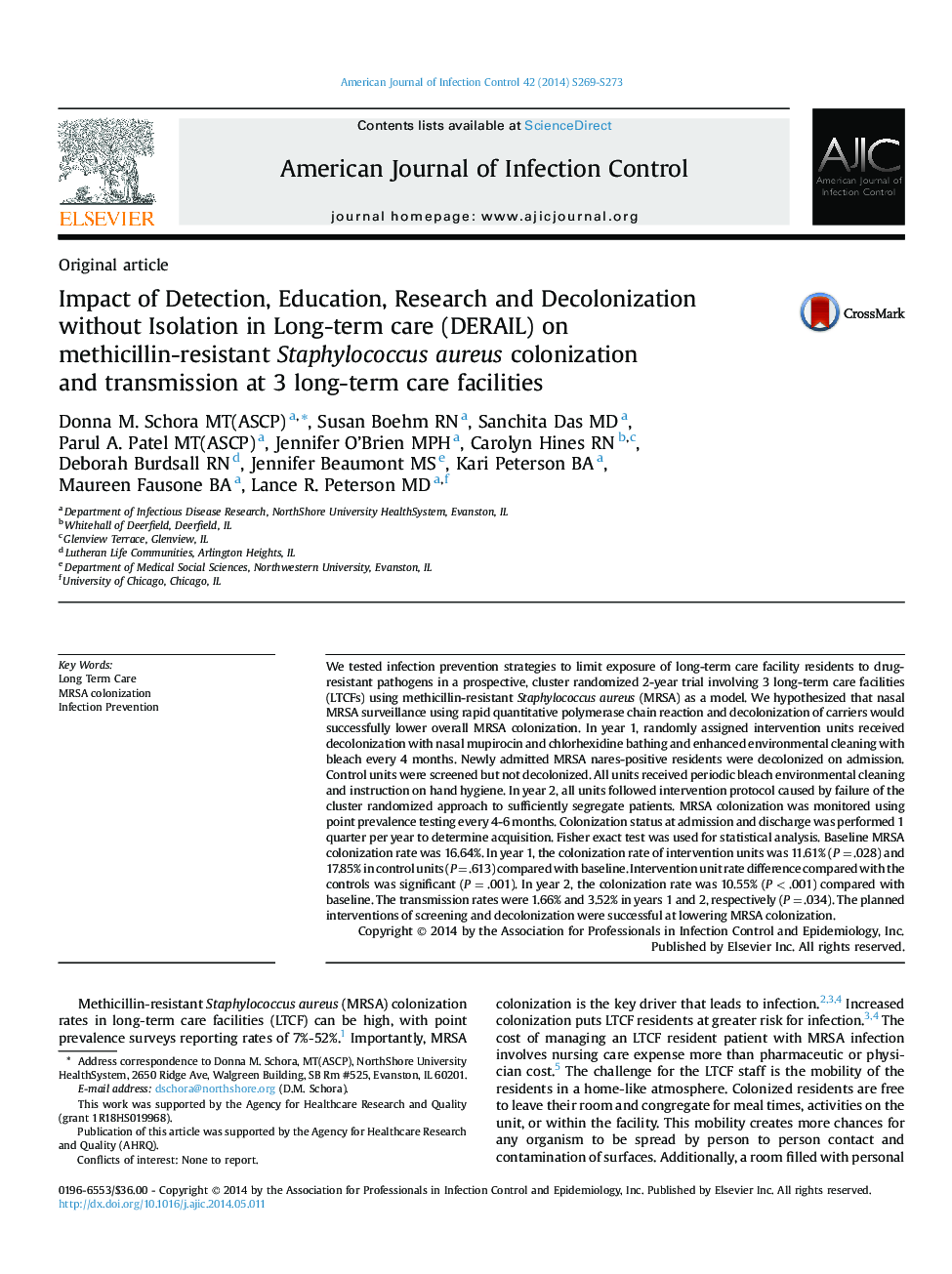| کد مقاله | کد نشریه | سال انتشار | مقاله انگلیسی | نسخه تمام متن |
|---|---|---|---|---|
| 5867851 | 1563481 | 2014 | 5 صفحه PDF | دانلود رایگان |
عنوان انگلیسی مقاله ISI
Impact of Detection, Education, Research and Decolonization without Isolation in Long-term care (DERAIL) on methicillin-resistant Staphylococcus aureus colonization and transmission at 3 long-term care facilities
دانلود مقاله + سفارش ترجمه
دانلود مقاله ISI انگلیسی
رایگان برای ایرانیان
کلمات کلیدی
موضوعات مرتبط
علوم زیستی و بیوفناوری
ایمنی شناسی و میکروب شناسی
میکروب شناسی
پیش نمایش صفحه اول مقاله

چکیده انگلیسی
We tested infection prevention strategies to limit exposure of long-term care facility residents to drug-resistant pathogens in a prospective, cluster randomized 2-year trial involving 3 long-term care facilities (LTCFs) using methicillin-resistant Staphylococcus aureus (MRSA) as a model. We hypothesized that nasal MRSA surveillance using rapid quantitative polymerase chain reaction and decolonization of carriers would successfully lower overall MRSA colonization. In year 1, randomly assigned intervention units received decolonization with nasal mupirocin and chlorhexidine bathing and enhanced environmental cleaning with bleach every 4Â months. Newly admitted MRSA nares-positive residents were decolonized on admission. Control units were screened but not decolonized. All units received periodic bleach environmental cleaning and instruction on hand hygiene. In year 2, all units followed intervention protocol caused by failure of the cluster randomized approach to sufficiently segregate patients. MRSA colonization was monitored using point prevalence testing every 4-6Â months. Colonization status at admission and discharge was performed 1 quarter per year to determine acquisition. Fisher exact test was used for statistical analysis. Baseline MRSA colonization rate was 16.64%. In year 1, the colonization rate of intervention units was 11.61% (PÂ =Â .028) and 17.85% in control units (PÂ =Â .613) compared with baseline. Intervention unit rate difference compared with the controls was significant (PÂ =Â .001). In year 2, the colonization rate was 10.55% (PÂ <Â .001) compared with baseline. The transmission rates were 1.66% and 3.52% in years 1 and 2, respectively (PÂ =Â .034). The planned interventions of screening and decolonization were successful at lowering MRSA colonization.
ناشر
Database: Elsevier - ScienceDirect (ساینس دایرکت)
Journal: American Journal of Infection Control - Volume 42, Issue 10, Supplement, October 2014, Pages S269-S273
Journal: American Journal of Infection Control - Volume 42, Issue 10, Supplement, October 2014, Pages S269-S273
نویسندگان
Donna M. MT(ASCP), Susan RN, Sanchita MD, Parul A. MT(ASCP), Jennifer MPH, Carolyn RN, Deborah RN, Jennifer MS, Kari BA, Maureen BA, Lance R. MD,